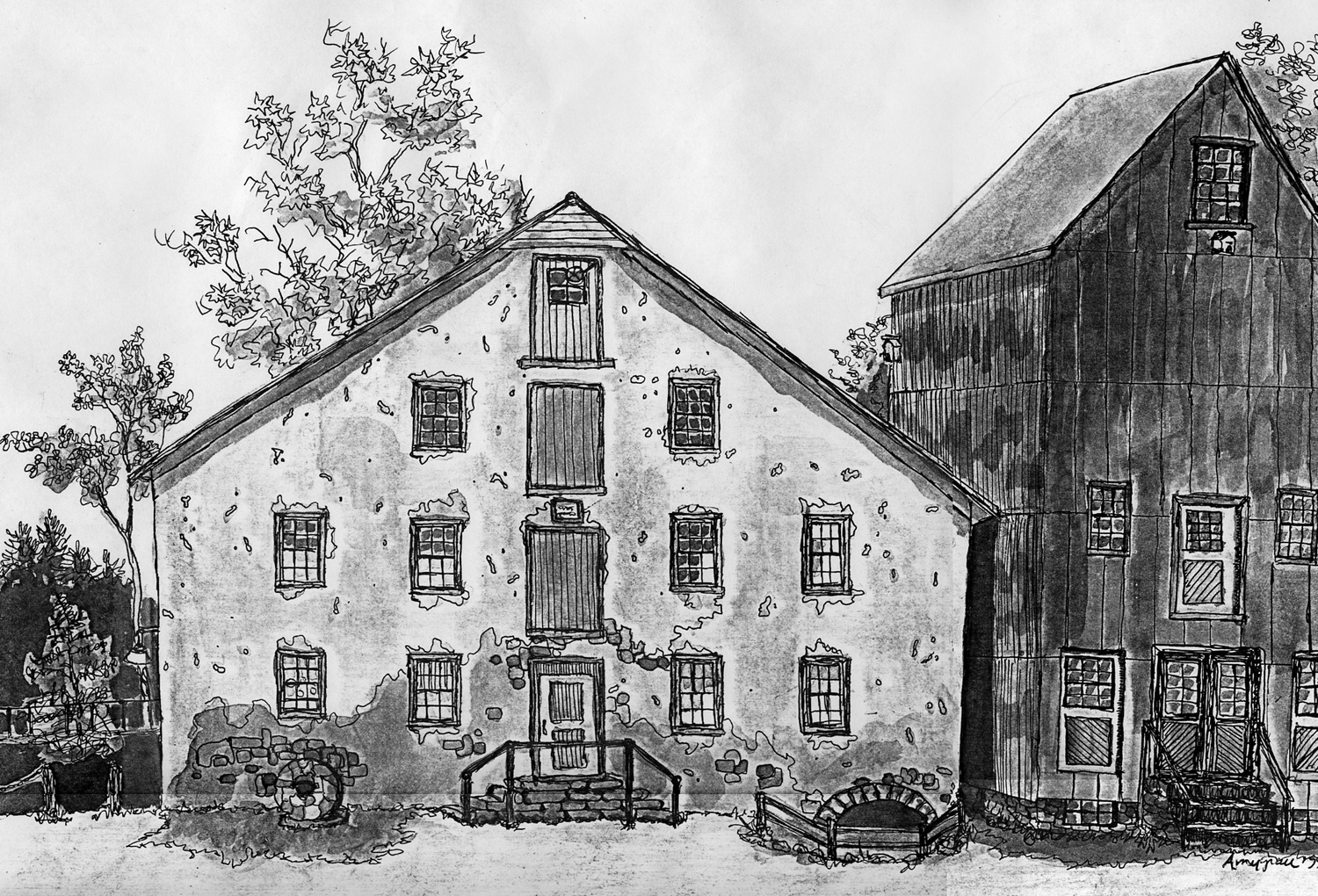Prallsville Mill
Located in a picturesque rural setting alongside the Delaware River in the historic town of Stockton, New Jersey, Prallsville Mills is a significant multiple structure industrial complex. It is significant as a representation of an early 19th to early 20th century village industrial complex, that has not been affected by the late 20th century suburban growth which has compromised the integrity of many other historical treasures. Significant in the areas of architecture, industry, community planning, transportation and commerce, its location on the Delaware and Raritan Canal, on land that is now protected as part of a state park, has ensured its protection for use by future generations. Prallsville Mills, along with several houses in the vicinity, was listed in the National Register of Historic Places in 1979 and is recognized as a cultural resource of statewide significance.
History of the Prallsville Mill
The buildings and structures date from ca. 1790 to the early twentieth century and include a 1790 linseed oil mill, a 1877 gristmill, a 1850 sawmill, a 1900 grain silo, a 1874 railroad trestle, a 1834 canal and several secondary outbuildings. Some structures, including the gristmill and railroad trestle, burned down and were replaced during the nineteenth century. The architectural integrity of the complex has been retained and serves as a good example of a mill complex. The industrial development of the area had begun by the time John Prall, Jr. purchased this site in the 1790s. A gristmill had been in operation for several generations and Prall, a local businessman and a veteran of the American Revolution, turned the small gristmill operation into an industrial complex that included the milling of linseed oil and lumber. Nearby, he ran a quarry that is believed to be the supplier of stone for the New Hope/Lambertville Bridge and numerous local structures. Prall, a leader in industry, was seen as a leader in the development of this community and a participant in the development of other communities in western New Jersey. After his death in 1831, the mills and surrounding land were sold to William Hoppock and John Wilson and significant advances in transportation took place under their ownership. The two most important transportation improvements of nineteenth century New Jersey, a canal and a railroad, crossed this site and served the industry's commerce needs. Hoppock and Wilson executed a deed with the Delaware & Raritan Canal Company in the 1830s to locate the canal on the property. Later in the 1850s, the Belvidere & Delaware Railroad, known as the Bel-Del, ran alongside the canal and gave additional transportation access to the industrial site. The mill changed hands several times during the nineteenth and twentieth centuries until it ceased operations in 1969. Its ideal location is evidenced by its success during three centuries.
The mills were powered by the Wickecheoke Creek, which fed directly into the canal. This was a unique feat of engineering designed to ensure a sufficient supply of water to operate the mills. A close interdependence between the mills and the canal evolved under a special deed of right-of-way that allowed the canal to pass directly through the mill property. The relationship continues today as a wagon storage building has been restored and serves as the offices for the Delaware and Raritan Canal Commission. Preservation of this site was intended to include all buildings and structures in order to interpret the full history of the site to the public. Remnants of the millraces, canal locks and the railroad bed remain amid the historic buildings of the complex. The Delaware River Mill Society has restored the Gristmill and the Linseed Oil Mill, which are used by the society and the community on a regular basis. The only major building still in need of rehabilitation is the sawmill.
The 1850 sawmill is a wood frame building built in three sections. The central unit is a large mid-19th century 2 1/2 story frame building, which probably served for storage space. The interior retains its massive 9x12 hewn oak timbers and weatherboards with cut nails and serves as a learning tool for 19th century construction methods. Under one end of this unit there are stone walled channels filled with water that may have provided power or canal access. The gable roof is covered with corrugated sheet metal. The second unit, ca. third quarter 19th century, runs along the linear façade of the earliest unit and has circular sawn framing and weatherboards with cut nails. The roof is shed-type. The last addition was provided in the early 20th century and runs halfway along the other linear façade of the original unit. This one story shed roofed section also has circular sawn framing, but has corrugated sheet metal walls. Large sliding doors provide access on the north and west facades. Most of the building is clad with wood clapboard, but there is also some vertical board and on the east addition some corrugated metal. The building was converted to storage some time ago and none of the machinery remains.
RELATED INFORMATION:
Goodspeed Histories:
Milling Industry at Prallsville Back of Year 1792


